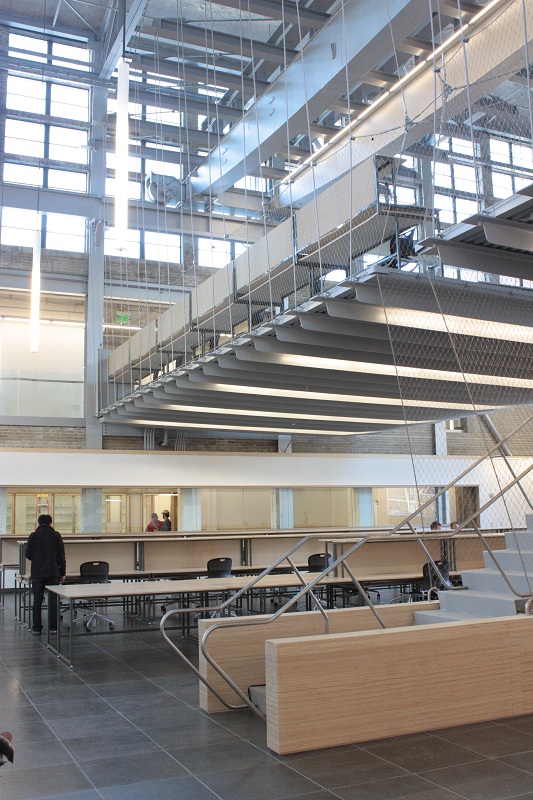
Following a year-long renovation process, the Hinman Research Building (HRB) reopened its doors for the first time this semester to faculty and students. Designed originally in 1939 by P.M. Heffernan, the architect and future director of the School of Architecture (1956-1978), the building served as the first freestanding research facility on campus. Located near the library, the facility will house over 200 faculty and graduate students engaged in a multitude of research activities.
As a result of the project, the College of Architecture (CoA) added a total of 14,500 sq. ft. of studio and instructional space, and over 6000 sq. ft. of research space. The renovation was prompted by the expansion of enrollment and research activity within the CoA over the past decade. The overall cost of the project was approximately $9.5 million, with the majority of the funds provided by the state.
The main hall of the building was recreated with the goal of making the space more flexible, where groups can engage in a variety of projects of different sizes and scales.
Among the new features of the building is a 3000 square foot mezzanine, suspended by a crane used historically to lift large structures into the research facility.
In addition to the mezzanine, a spiral staircase enclosed in a cable mesh connects the floor to offices on the sides of the hall. Other features of the building now include a 40-foot guillotine door which, when opened, reveals a large gallery where students can showcase and critique each others’ work. The hall also contains pendant lights which can be retracted to allow large film screenings and other activities.
“I see this building as a theater not only for the imagination of the School or the College, but I like to think of it as a theater of the imagination of the Institute… I would like to see us having joint projects in here with engineers, architects and industrial designers creating together projects that we can all share,” said Dr. Alan Balfour, the Dean of the CoA.
The building will serve as a research facility within the CoA, advancing technology for the design and construction of buildings. In pursuit of this goal, the new Digital Building Laboratory (DBL) will also be located within the building. Comprised of students, faculty and corporations, the DBL will be dedicated to moving forward modeling and visualization technology in the field of construction.
“Working with drawings produced by drafting software is really an obsolete notion in almost all other industries, and the idea of the DBL is to take advantage of the current conditions in the construction industry, which is finally undergoing the revolution of modeling,” said Chuck Eastman, Director of the DBL.
The HRB was the first major setting for publicly funded research in the South. The building served initially as a research facility of the Georgia Engineering Experiments Station, which was renamed the Georgia Tech Research Institute (GTRI) in 1948.
The research conducted at that time was instrumental to the advancement of helicopter and microwave technology. In fact, the crane used to suspend the mezzanine in the building today was used to lift helicopter systems in and out of the building.
Following its original construction in 1939, the building has undergone a series of additions over the years.
The project was a result of collaboration between many different entities, including architectural firm Lord, Aeck & Sargent, Office dA, the Beck Group and Nader Tehrani, a former professor in the CoA during the 2005-2006 academic year.
The building was treated as a historical preservation project and had to meet additional guidelines in order for changes to be approved. The renovated building is LEED Gold certifiable.
